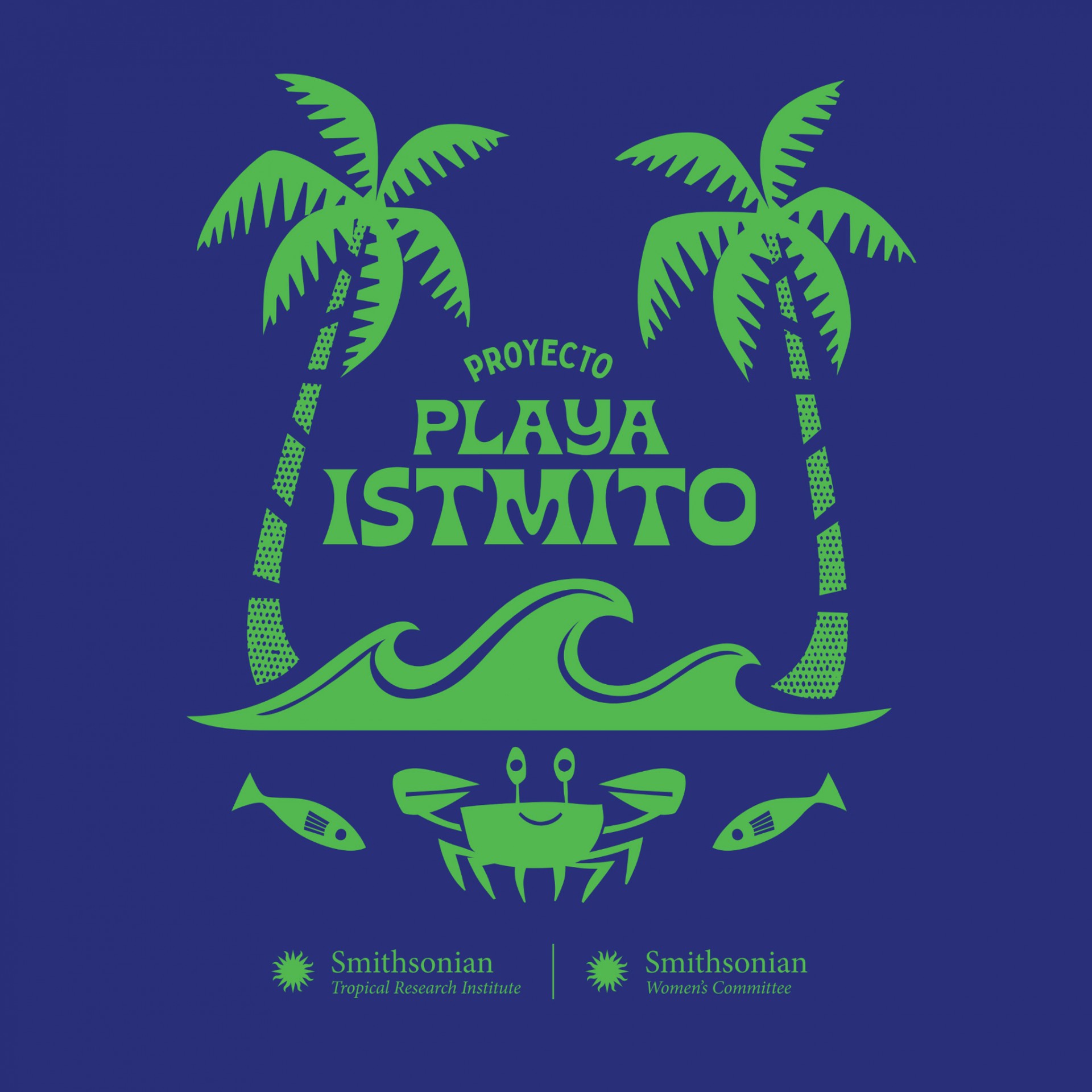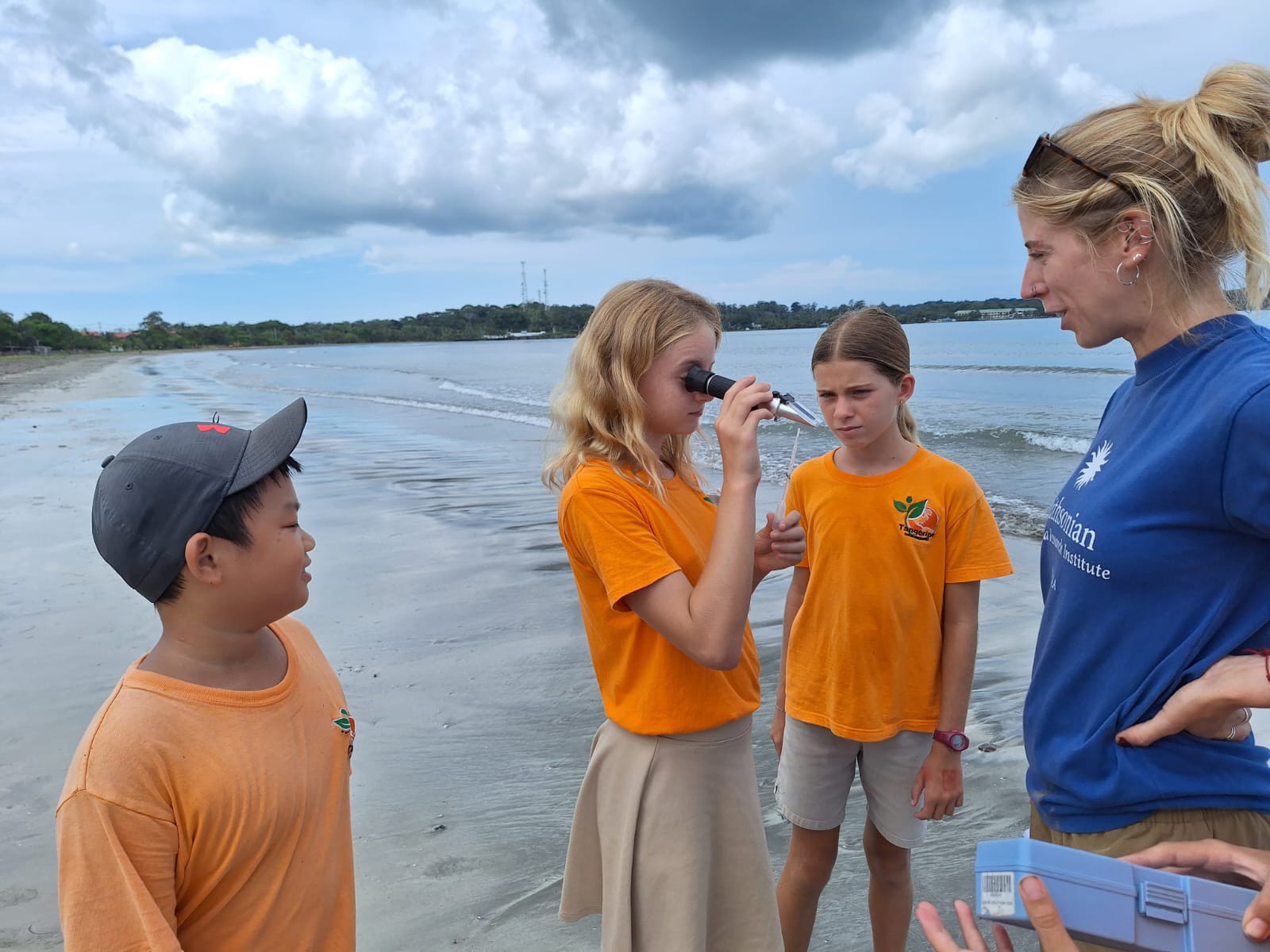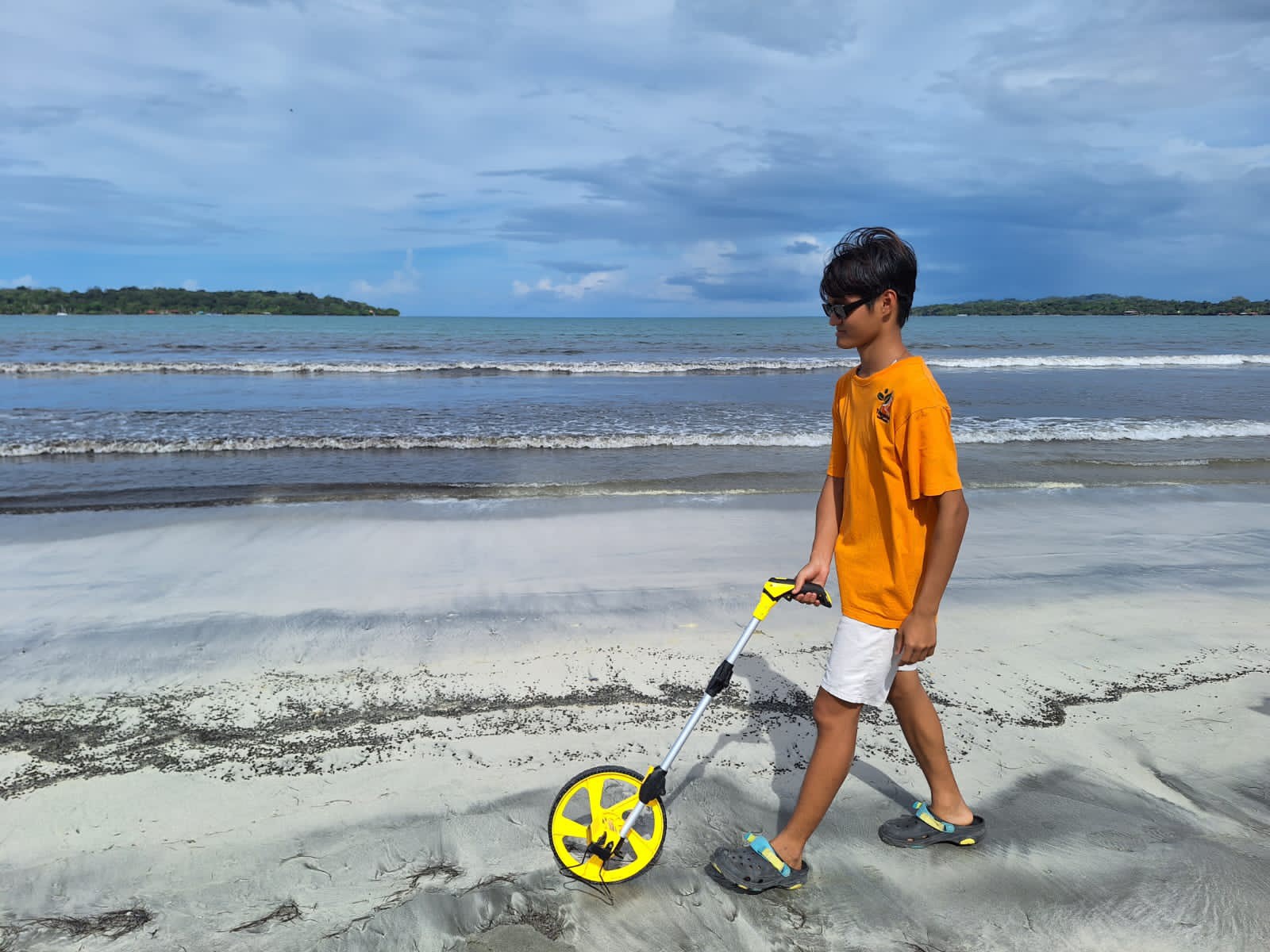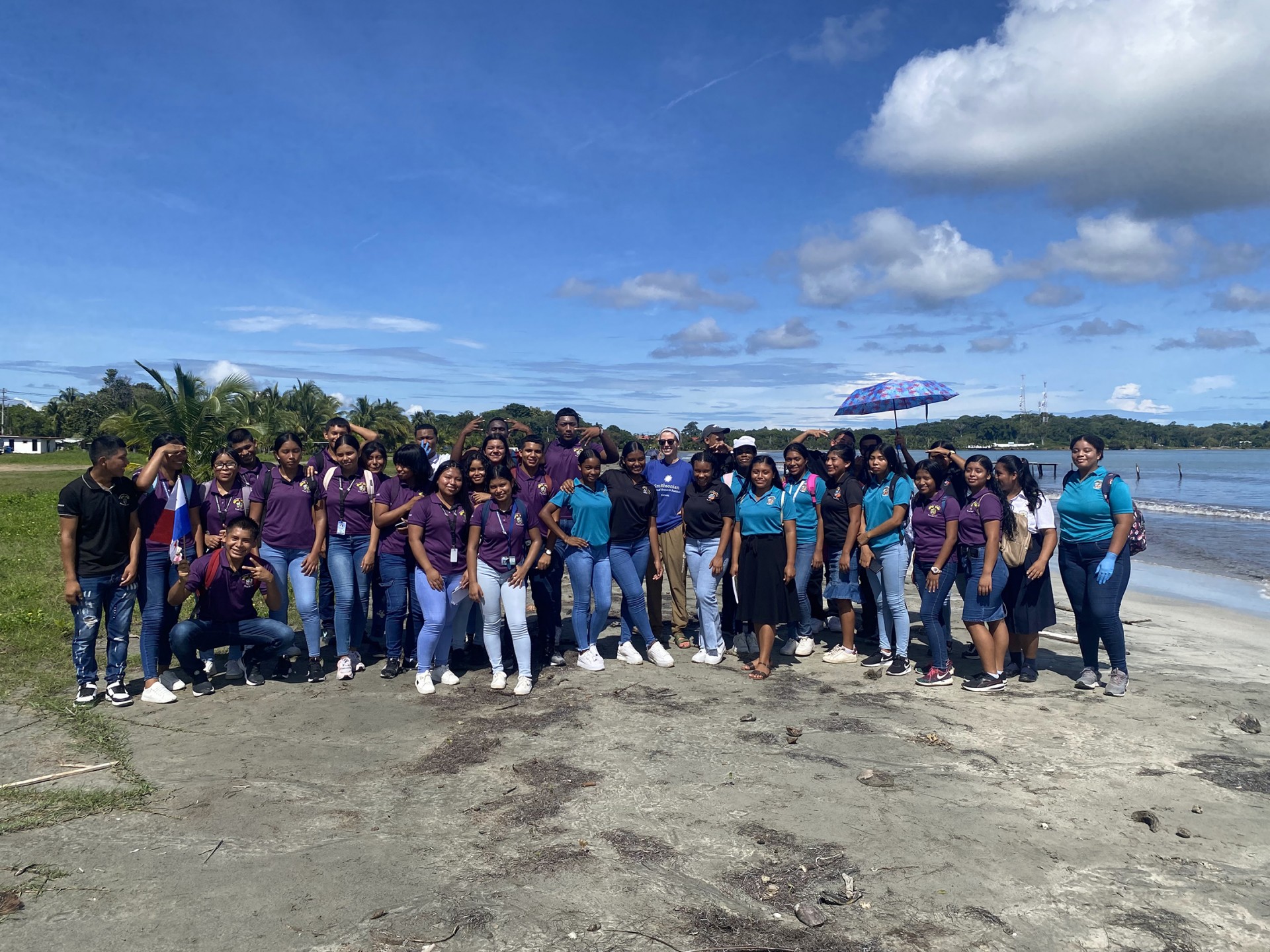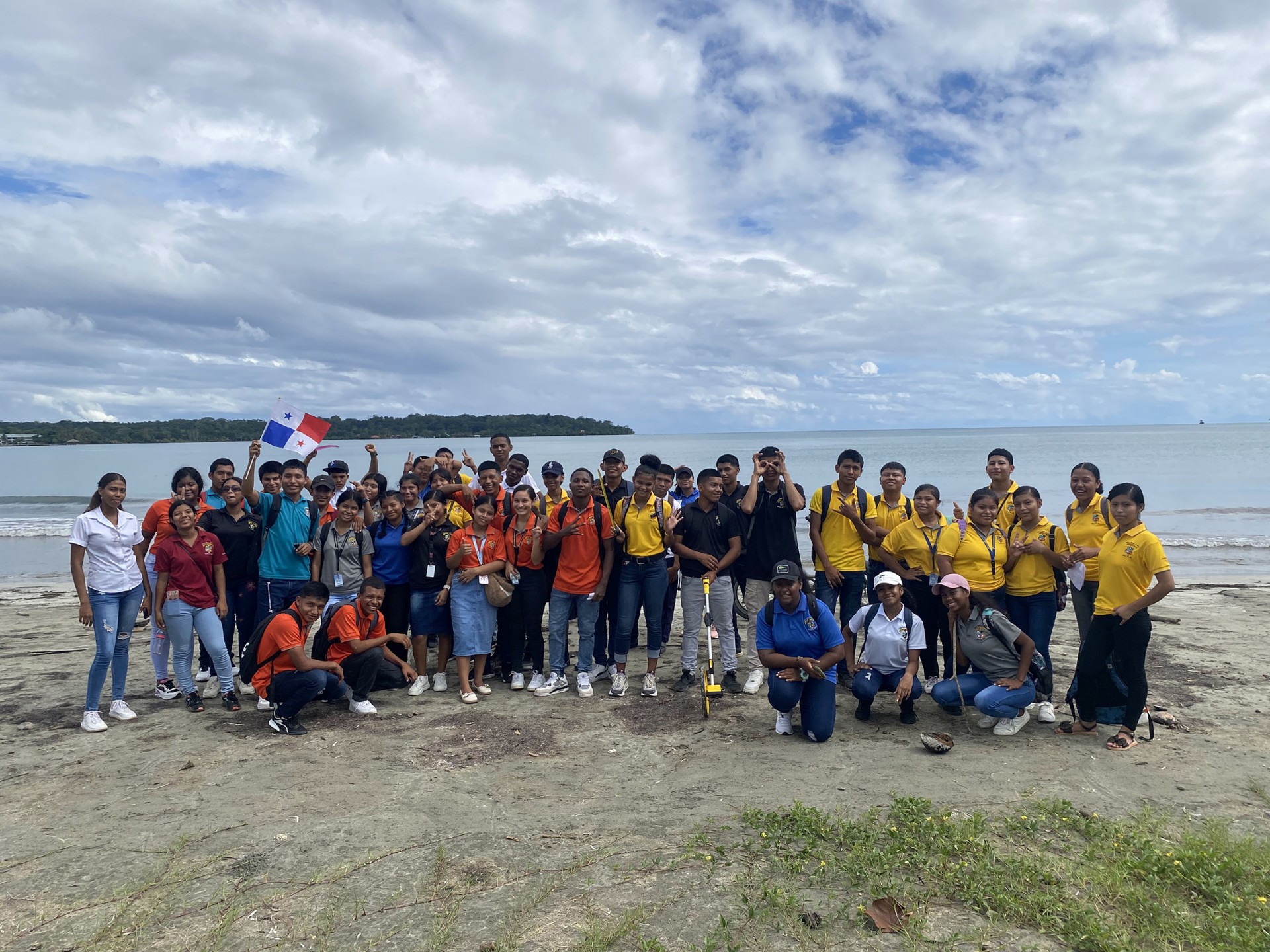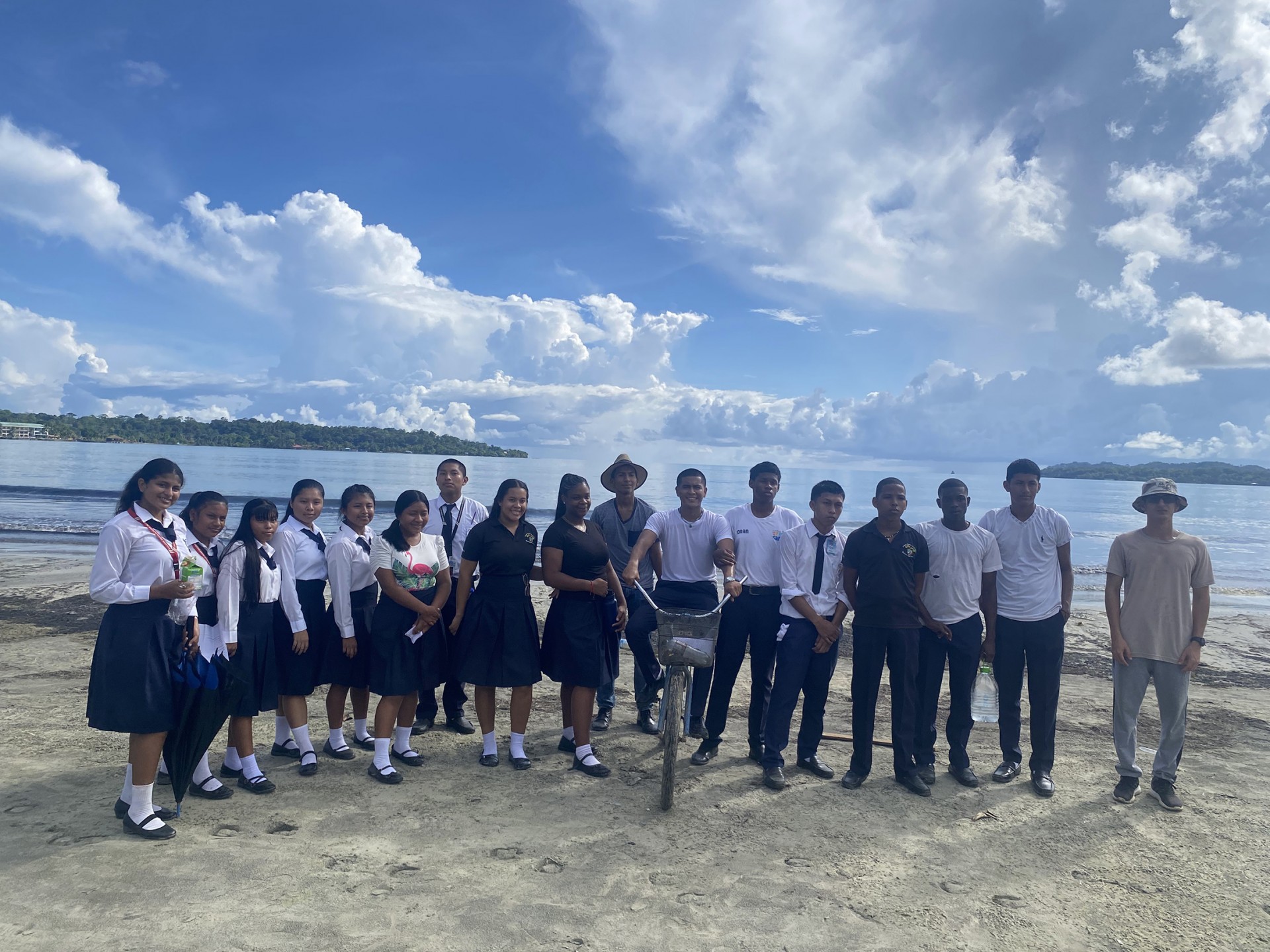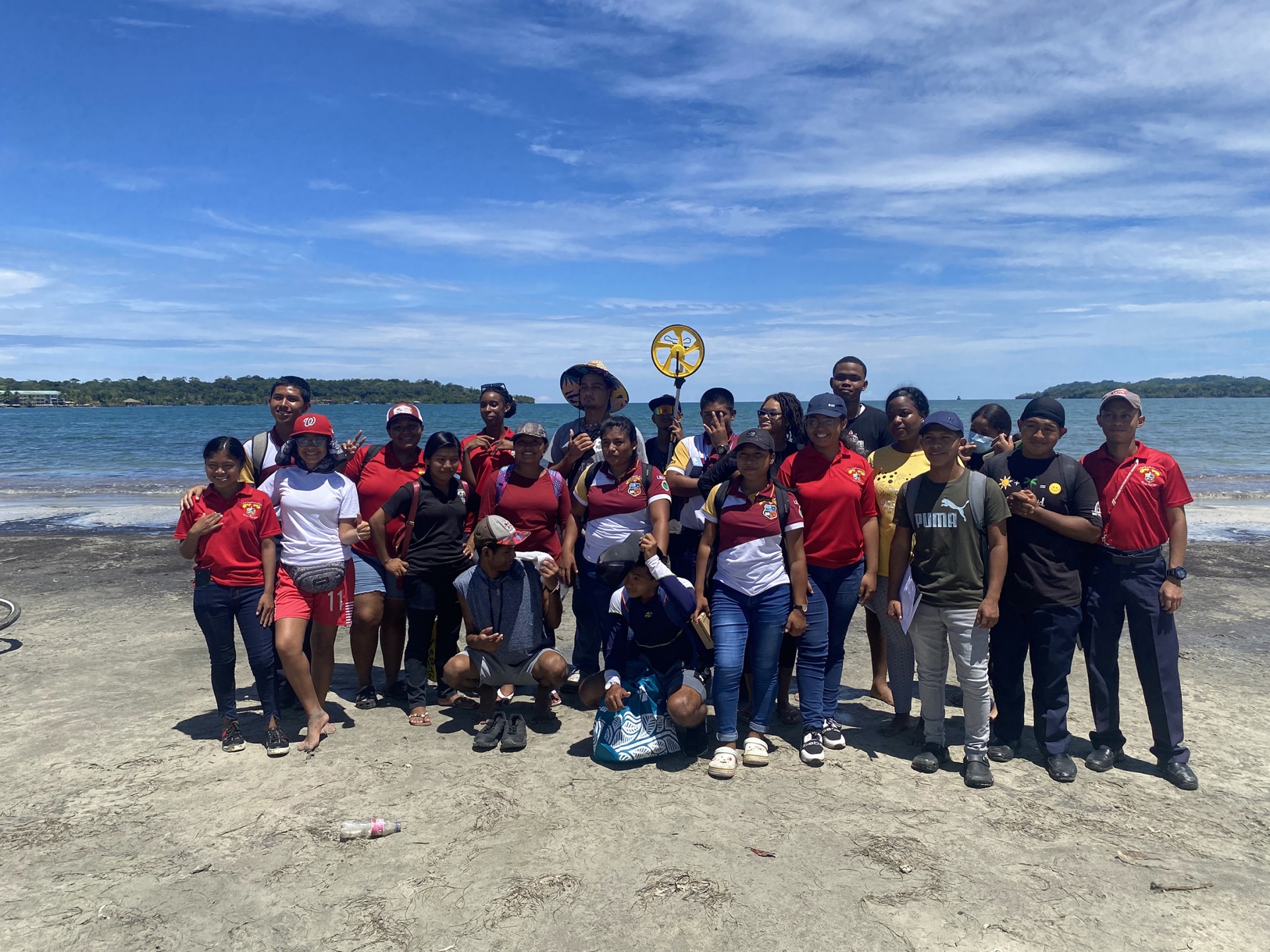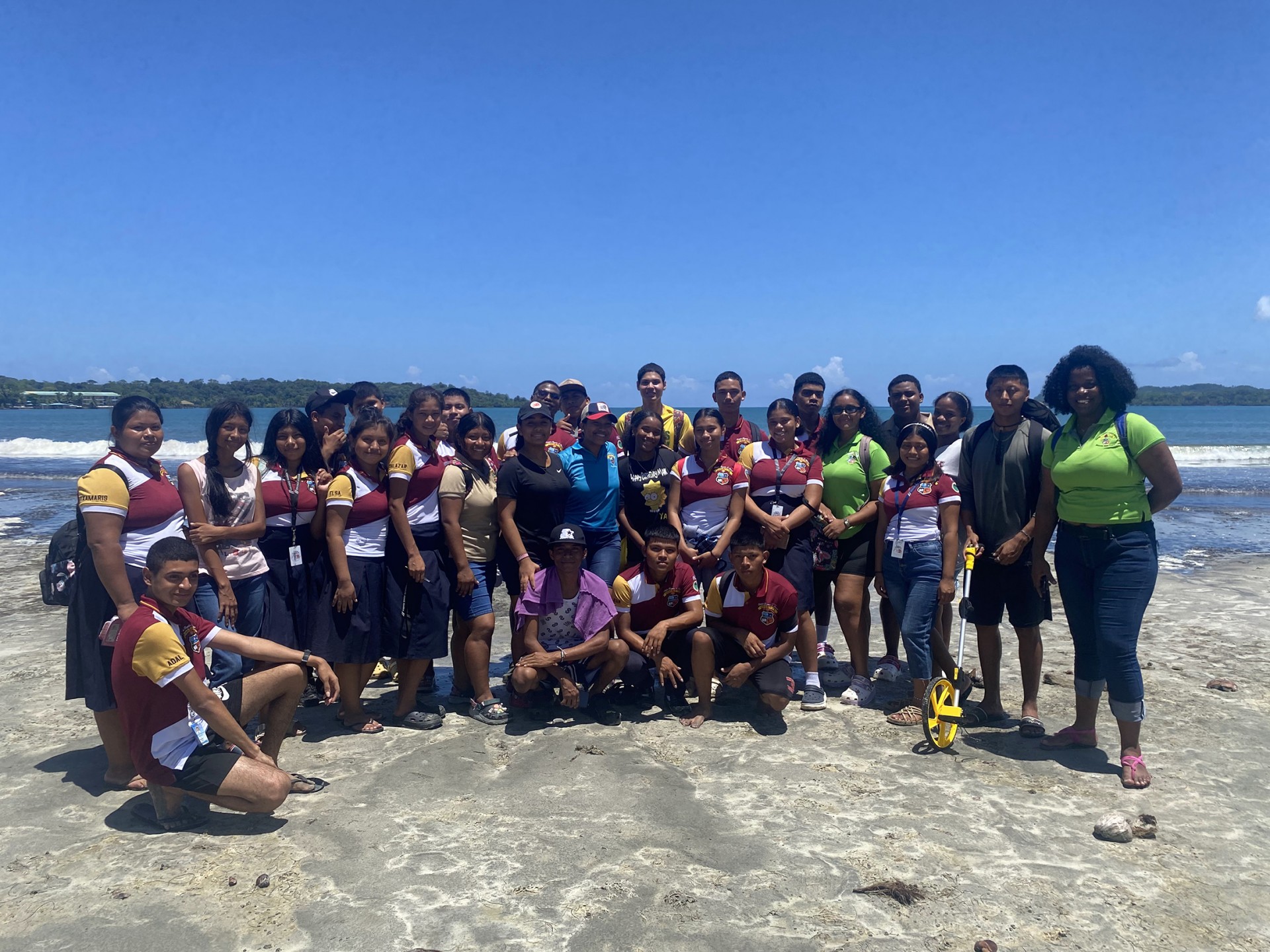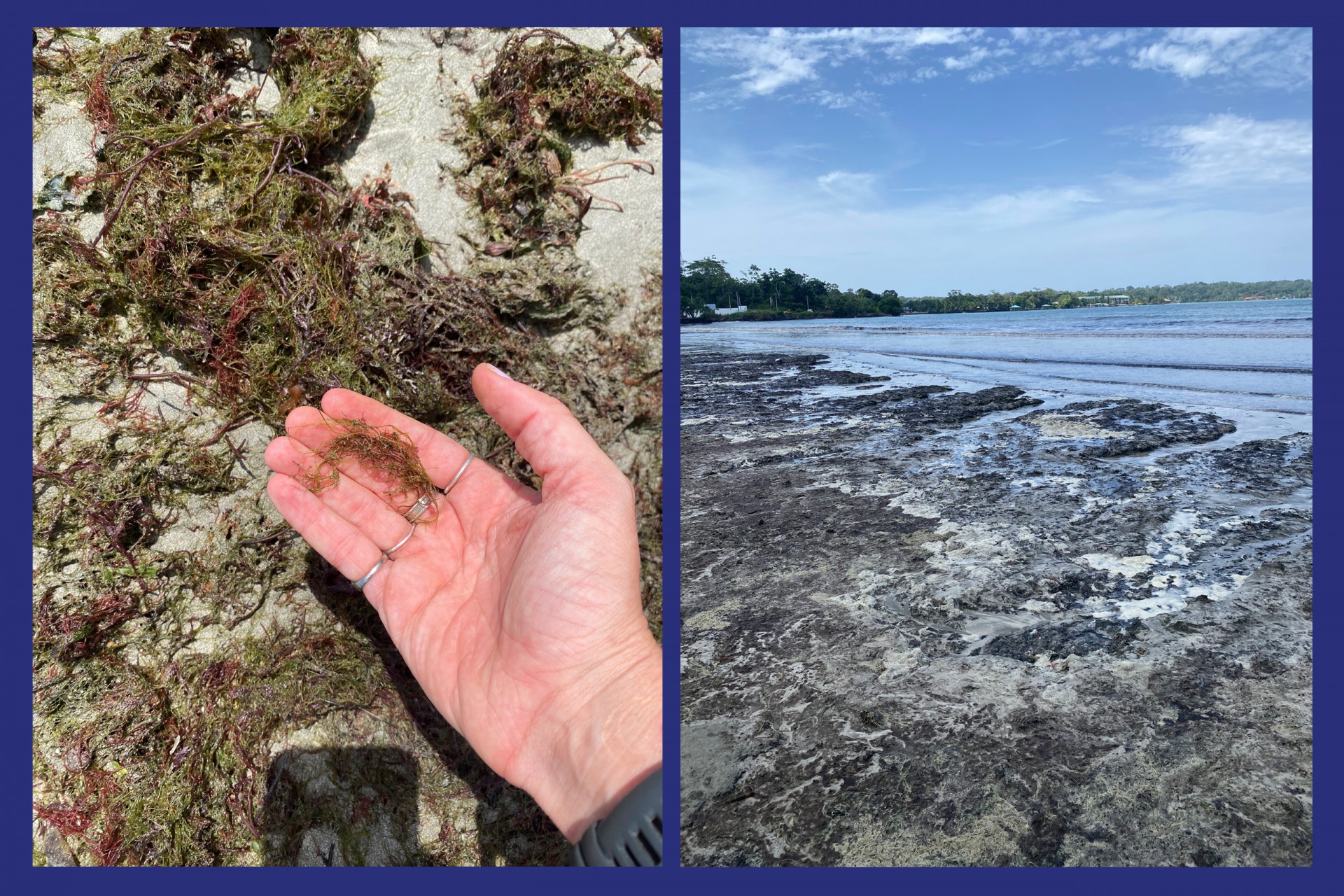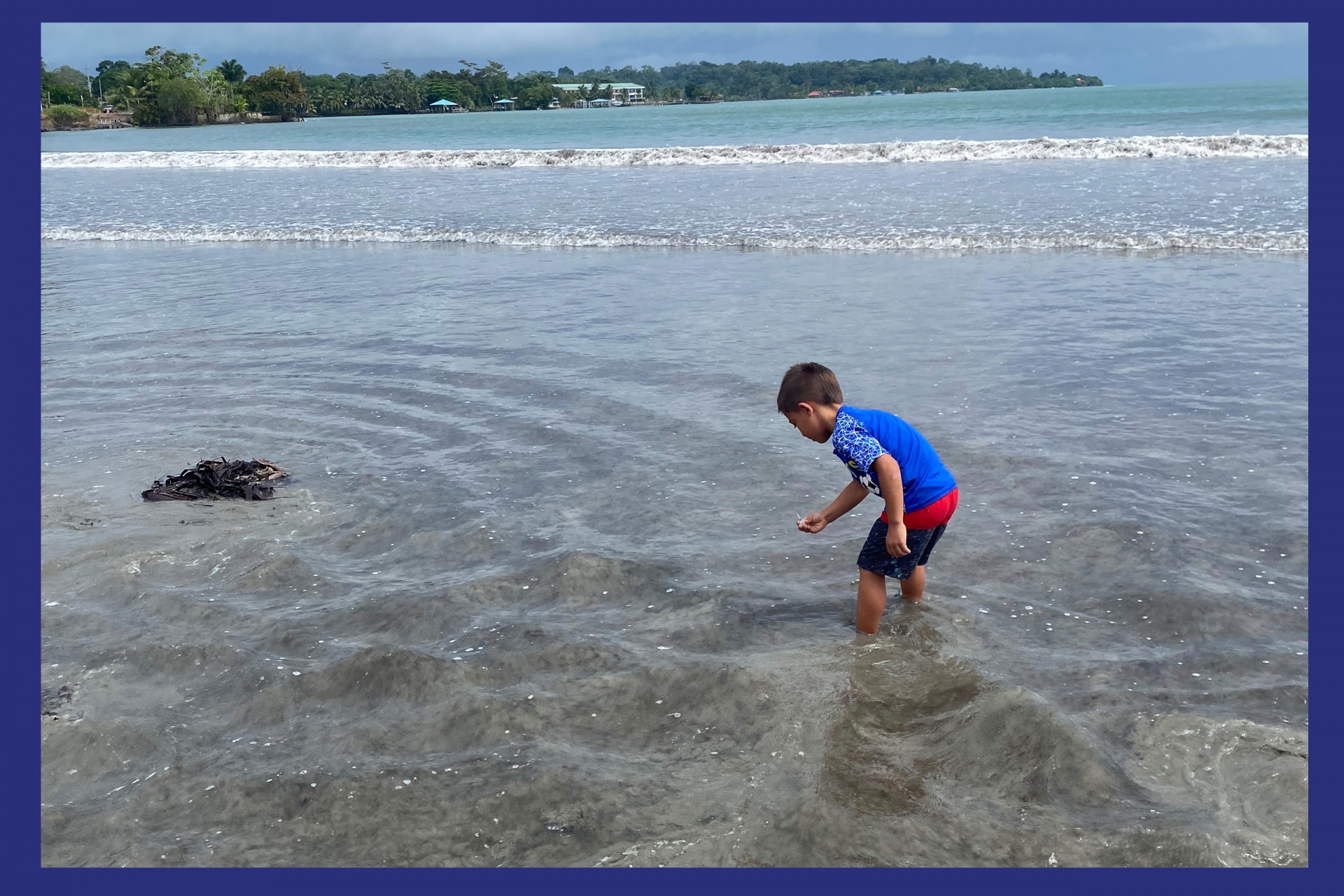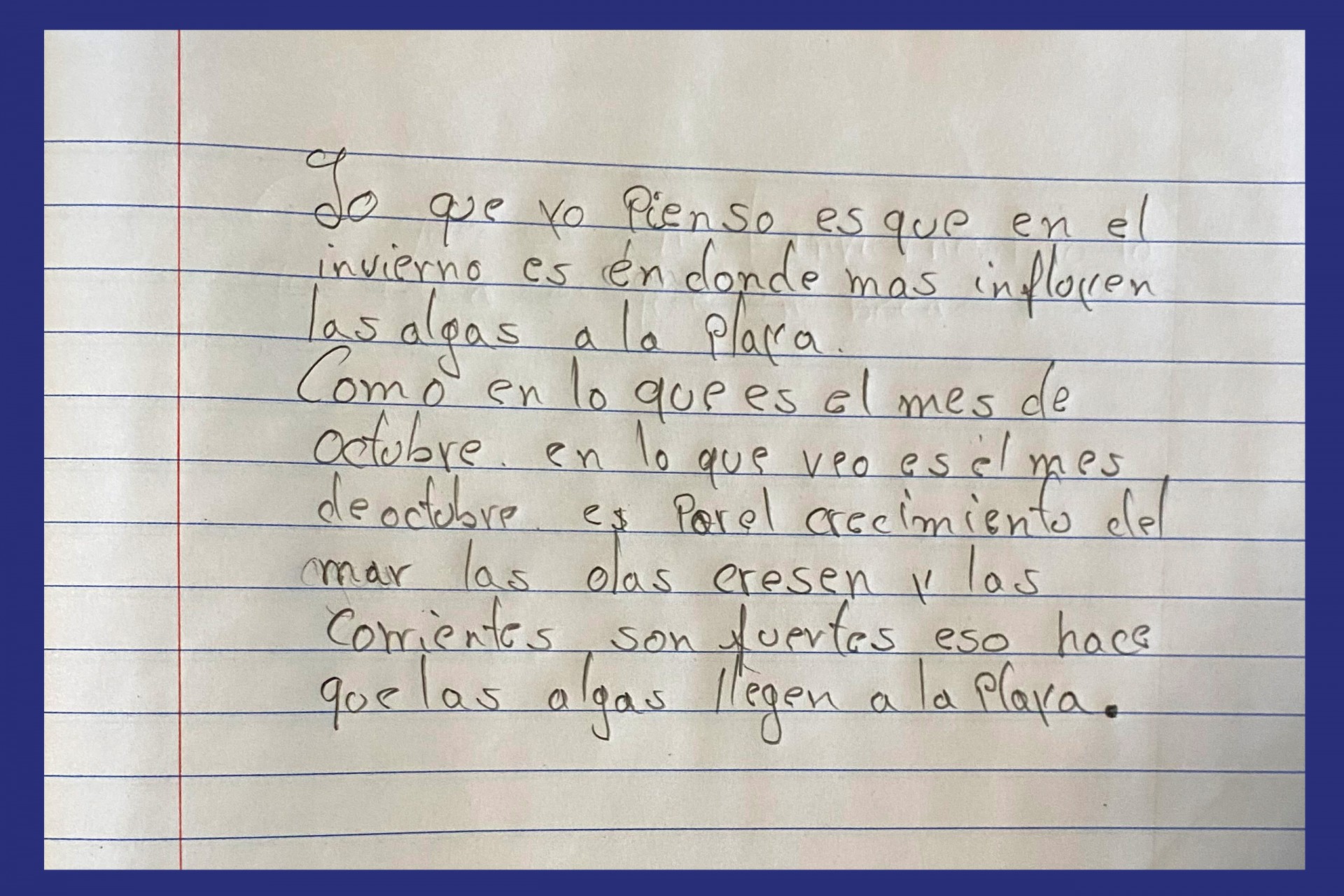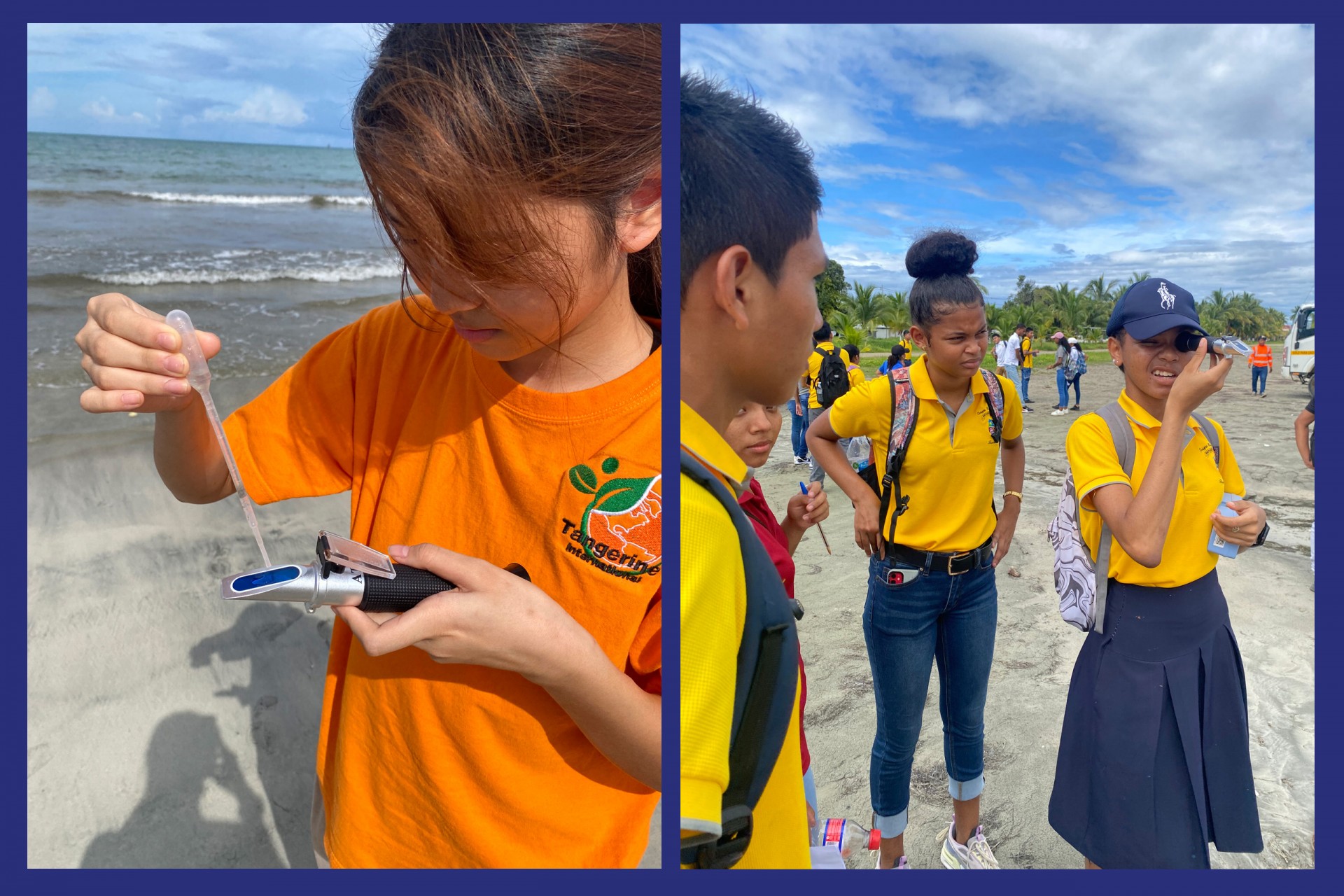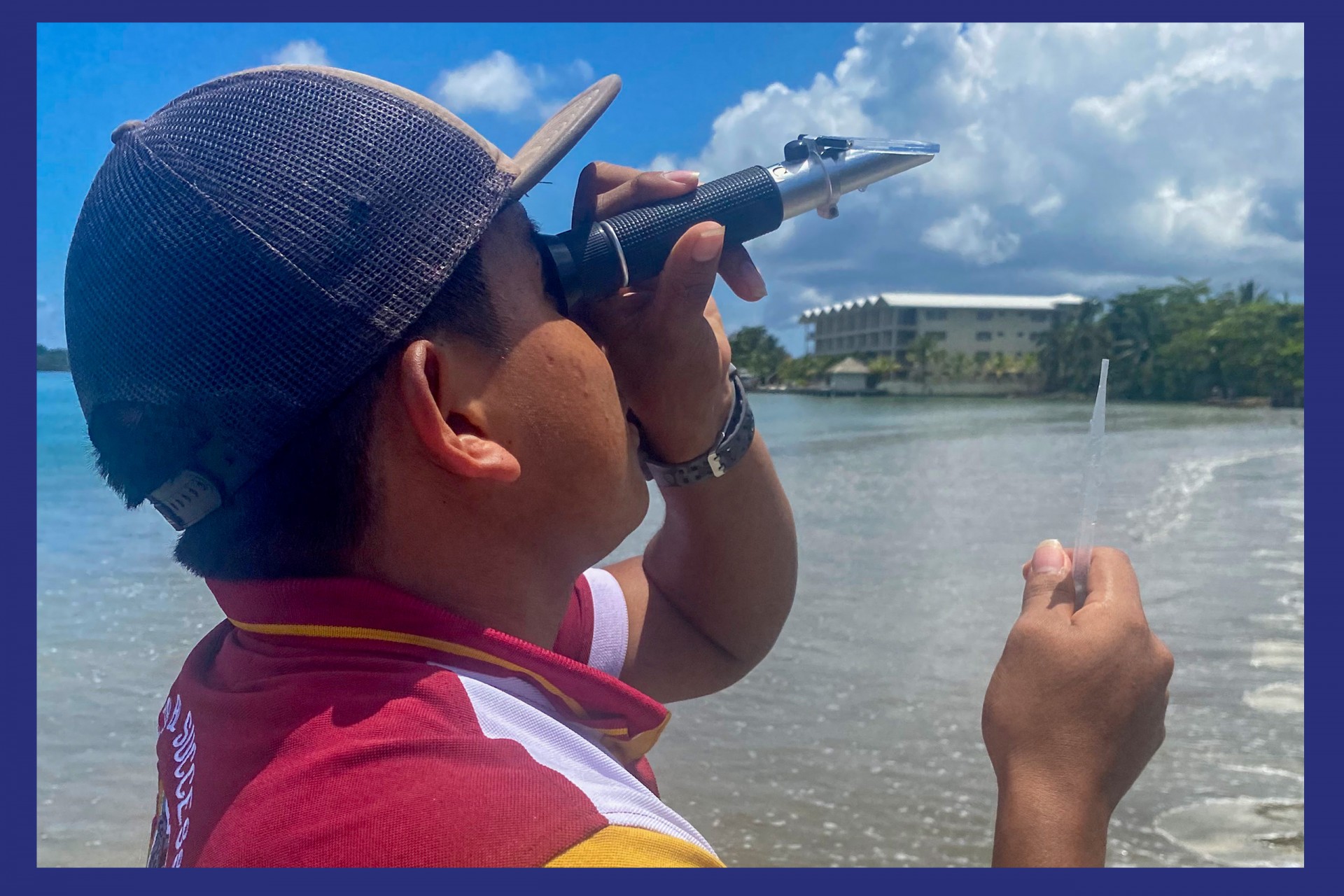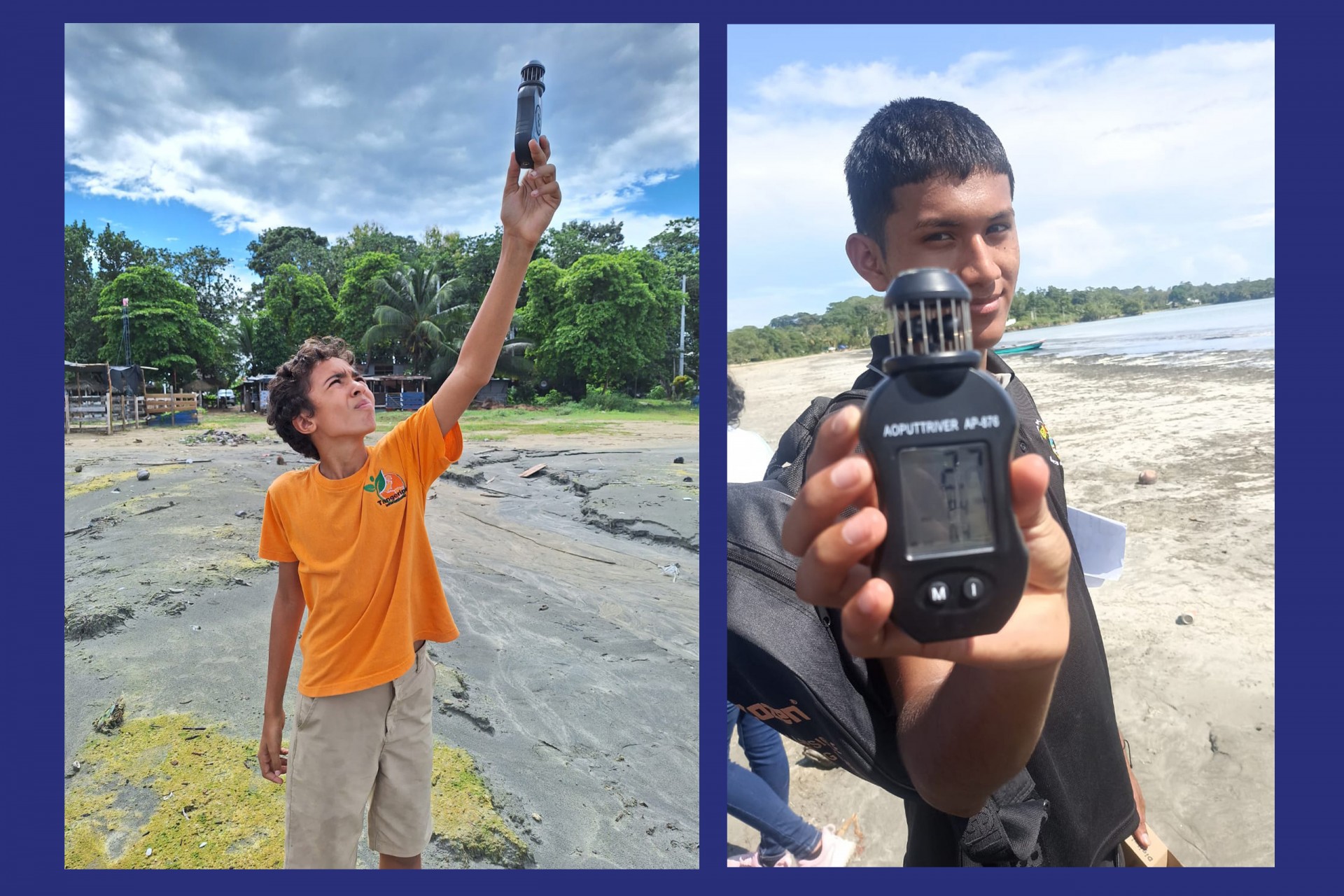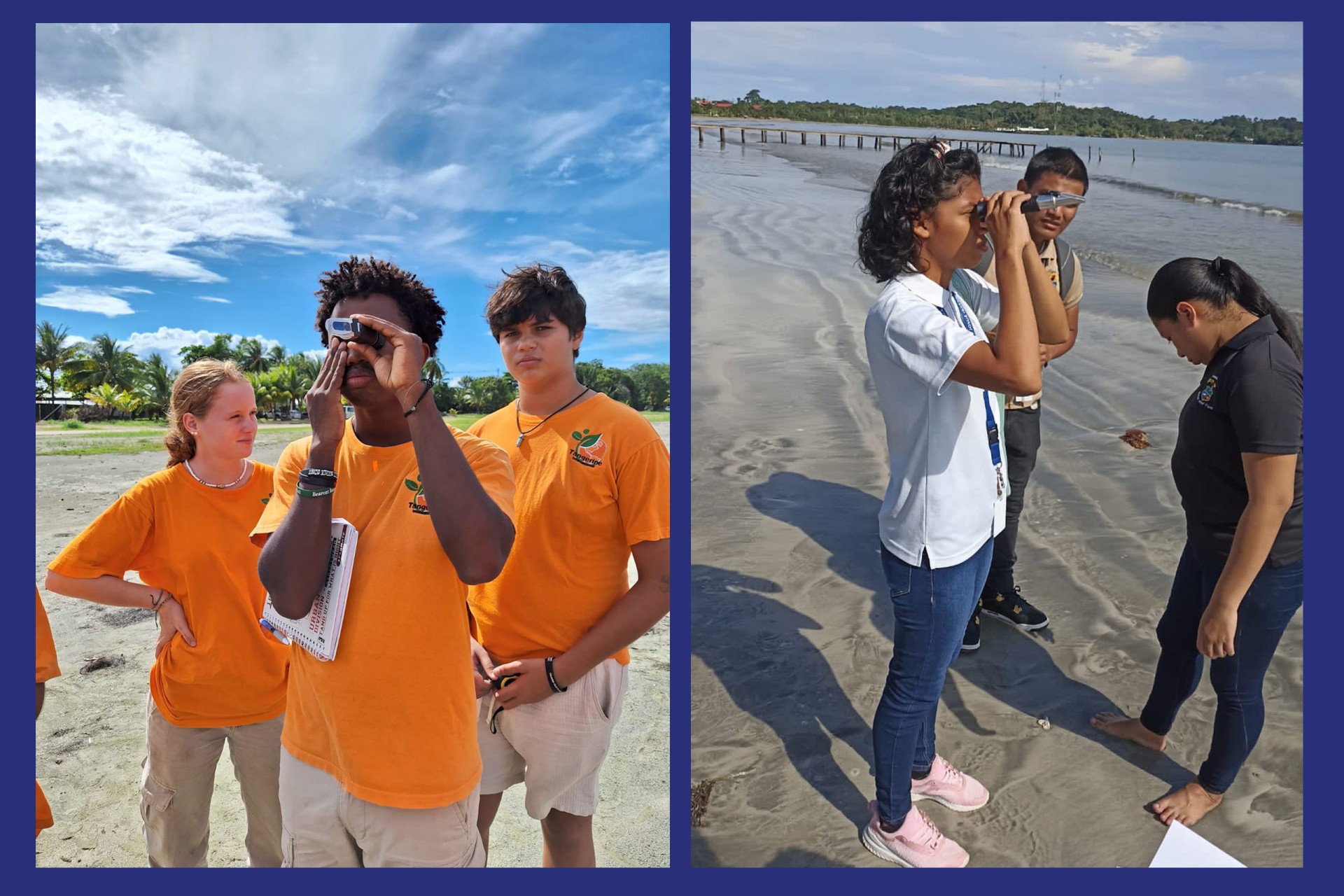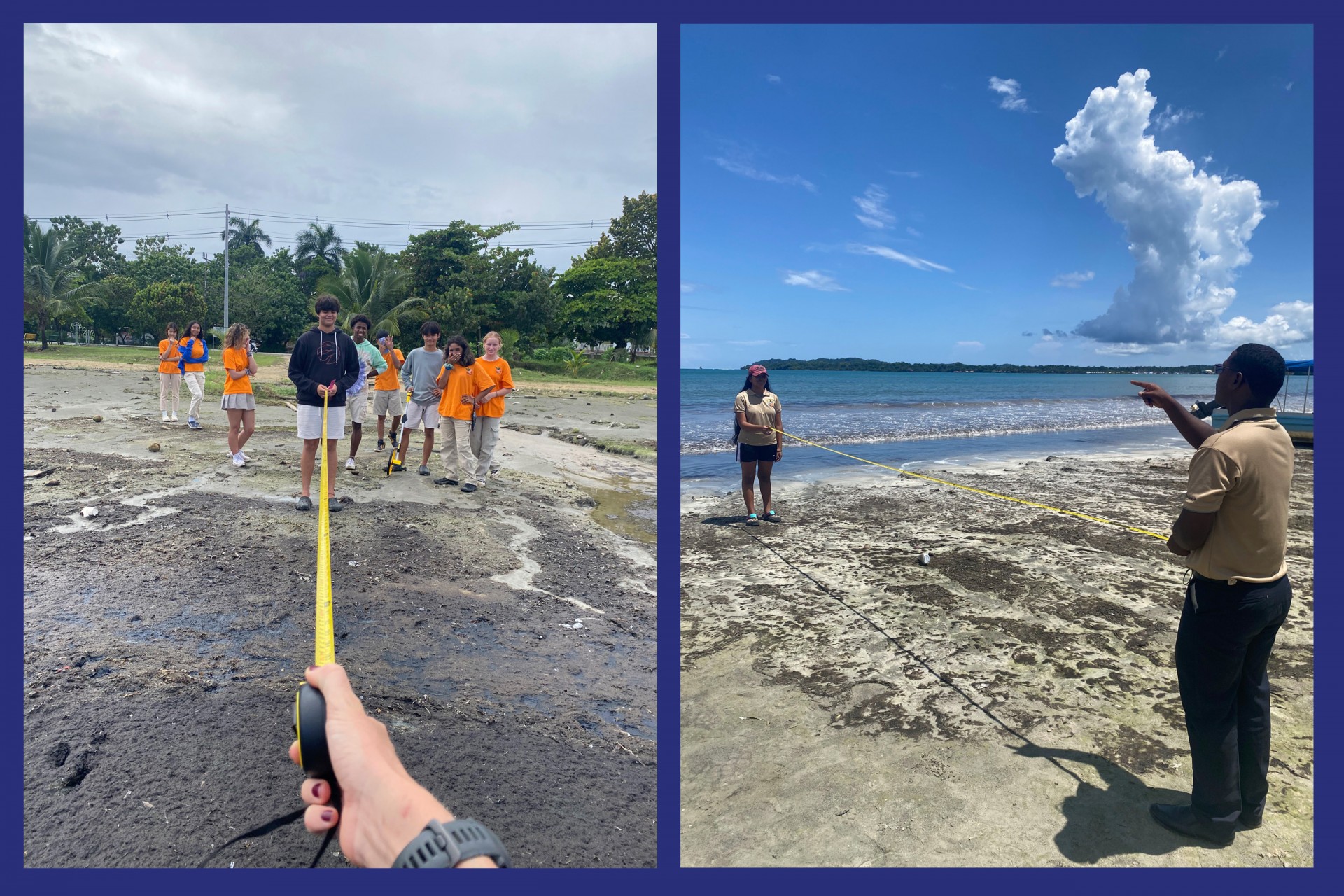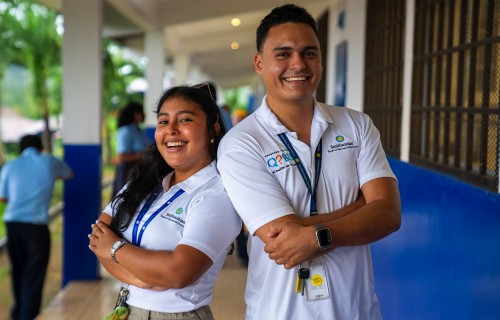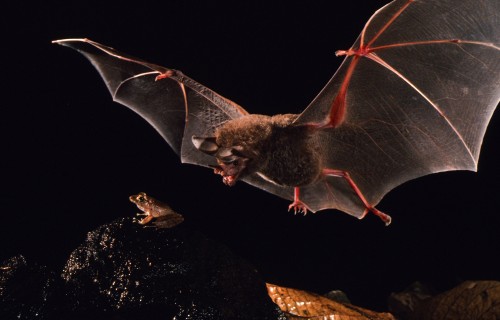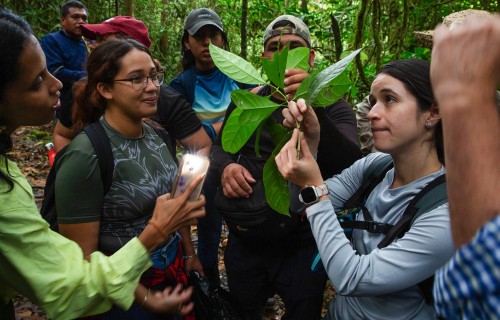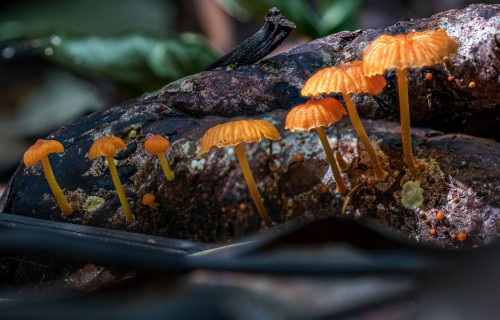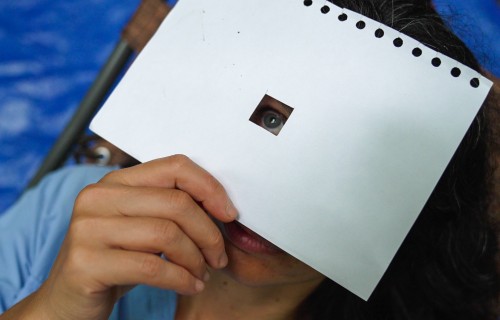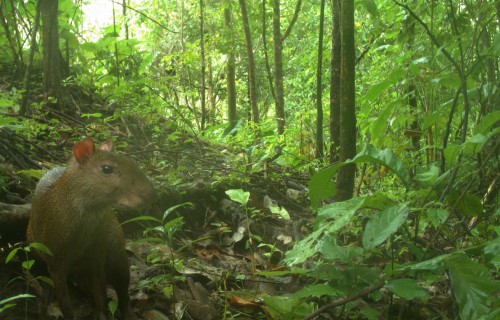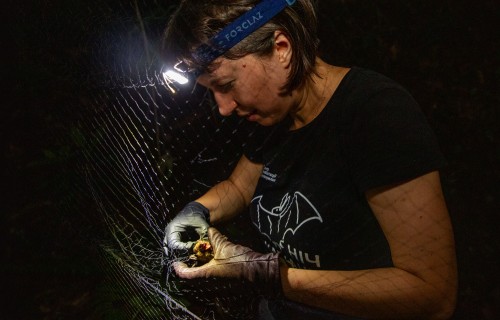How katydid songs expand
researchers’ knowledge of
tropical insects
Playa
Istmito Project
Involving local students in the study of algal blooms on Isla Colón, in Bocas Del Toro, Panama.
Students in Bocas del Toro helped Smithsonian researchers collect environmental data to better understand what factors influence the proliferation of algal deposits in the largest island of the archipelago
Algal deposits on Playa Istmito (Little Isthmus Beach) have long been a topic of interest for citizens of Isla Colón, the largest island in the Bocas del Toro archipelago, situated along Panama’s Caribbean coast. The beach, located on a narrow strip of land connecting the Bocas Town with the rest of the island, is sporadically plagued with algal mats that can wash ashore several times a month. These unsightly, rotting algal mats make it unpleasant for people to swim and walk on the beach and detract from the tourism potential of this beautiful spot: the algae often smell foul, form large mounds across the tideline of the beach when washed up, and algae floating in the water may irritate swimmers’ skin.
The Bocas Research Station of the Smithsonian Tropical Research Institute (STRI), through the generous financial support of the Smithsonian Women's Committee, created Project Playa Istmito: Students on Isla Colón collect environmental data to better understand if the algal deposits on Playa Istmito are more prevalent during certain seasons and what factors influence their proliferation. The project builds on a 2016 study by Alberto Saa, Regional Director of the Bocas del Toro branch of the Aquatic Resources Authority (Autoridad de los Recursos Acuáticos de Panamá, ARAP), in which he measured algal deposits bi-weekly in addition to nutrient inputs from nearby sources.
During the past two months, over 200 students ranging in age from 6 - 18 at Colegio Rogelio Josué Ibarra, Dr. Andres Culiolis Bayard Multicultural International School, Tangerine International School and FloreSer Tutoring Centre participated in an information session and helped collect data at Playa Istmito. After a briefing about scientists’ projects at the Smithsonian station, and why researchers are interested in coastal ecosystems, students learned how algal blooms occur, and about the algal problem currently happening on Isla Colón.
The students were then introduced to the project, the specific environmental parameters to be measured and had the chance to formulate their own hypotheses based on what they had learned. They contributed two days of data collection to the project, which involved walking to the beach and measuring GPS points, length, width, and height of algal deposits, as well as salinity, air and water temperature, and wind direction. Time spent helping STRI researchers with this project will count towards the community service hours required for high school students to graduate.
Data will be collected until June 2024. If you would like to know more, or have questions regarding the project, please contact program coordinator Eileen Haskett at haskette@si.edu.
Special thanks to Alberto Saa and Panama’s Ministry of Education (MEDUCA) for their continued mentorship and collaboration with this project, and to the Smithsonian Women's Committee for their financial support.

